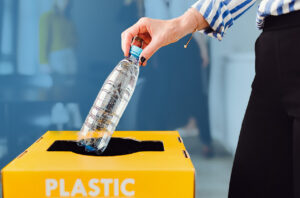Legionnaires’ disease is a potentially fatal form of pneumonia. The bacteria that cause the disease are found naturally in environmental water sources such as rivers, lakes, and reservoirs and generally pose no problems. However, they can also grow in purpose-built water systems such as hot and cold water systems, whirlpool spas and cooling towers, and evaporative condensers such as those used in air conditioning, refrigeration, and other systems.
The disease is caused when bacteria get into the lung, for example, after inhaling small droplets created by cooling systems, humidifiers, showers, spa pools, etc. While anyone can be affected, some people may be at greater risk, for example, those with already weakened immune systems. The risk is greatest when the conditions support the growth and release of bacteria. Some examples include:
- The water temperature is between 20 and 45 °C
- Water is stored or recirculated.
- There are sources of nutrients, e.g., rust, sludge, scale, biofilm, etc.
- Water droplets may be produced and dispersed
- Vulnerable people are likely to be present
General health and safety legislation requires employers to assess risks that may arise from work activities and to put in place measures to control those risks. More specifically, the Control of Substances Hazardous to Health (COSHH) regulations set out actions to control the risk from hazardous substances, including biological agents. These include putting in place measures to prevent or control exposure, maintaining, testing, and examining those control measures to make sure they remain effective, and providing information, instruction, and training to employees.
The first stage will require a competent person to carry out an assessment and identify sources of risk. This will involve assessing your water systems and identifying if they are likely to create a risk of exposure to legionella. If a risk is identified that can’t be prevented, then appropriate controls will need to be introduced. Exactly what controls are required will depend on the particular circumstances.
The HSE publishes a number of technical guides to help duty holders manage legionella risks in different systems on their premises.
For some systems, regular water testing and the use of biocides can be key parts of legionella control. The HSE’s technical guide covering evaporative cooling systems was recently updated to give further information on DPD No. 1 testing methodology and the effect that cooling water pH has on the efficacy of halogen-based biocides such as chlorine and bromine.
The updated guidance is free to download from the HSE’s website.
If you have any questions or would like support with managing issues at your workplace, please speak to your usual contact or get in touch using the form below.

50 Years of the HSE and the Health & Safety at Work Act

Building Fire Safety Updated Approved Document B Published

Protecting Properties Against Flooding

The Building Safety Act – Are you meeting your legal responsibilities?

Reasonable adjustments for neurodiverse employees
